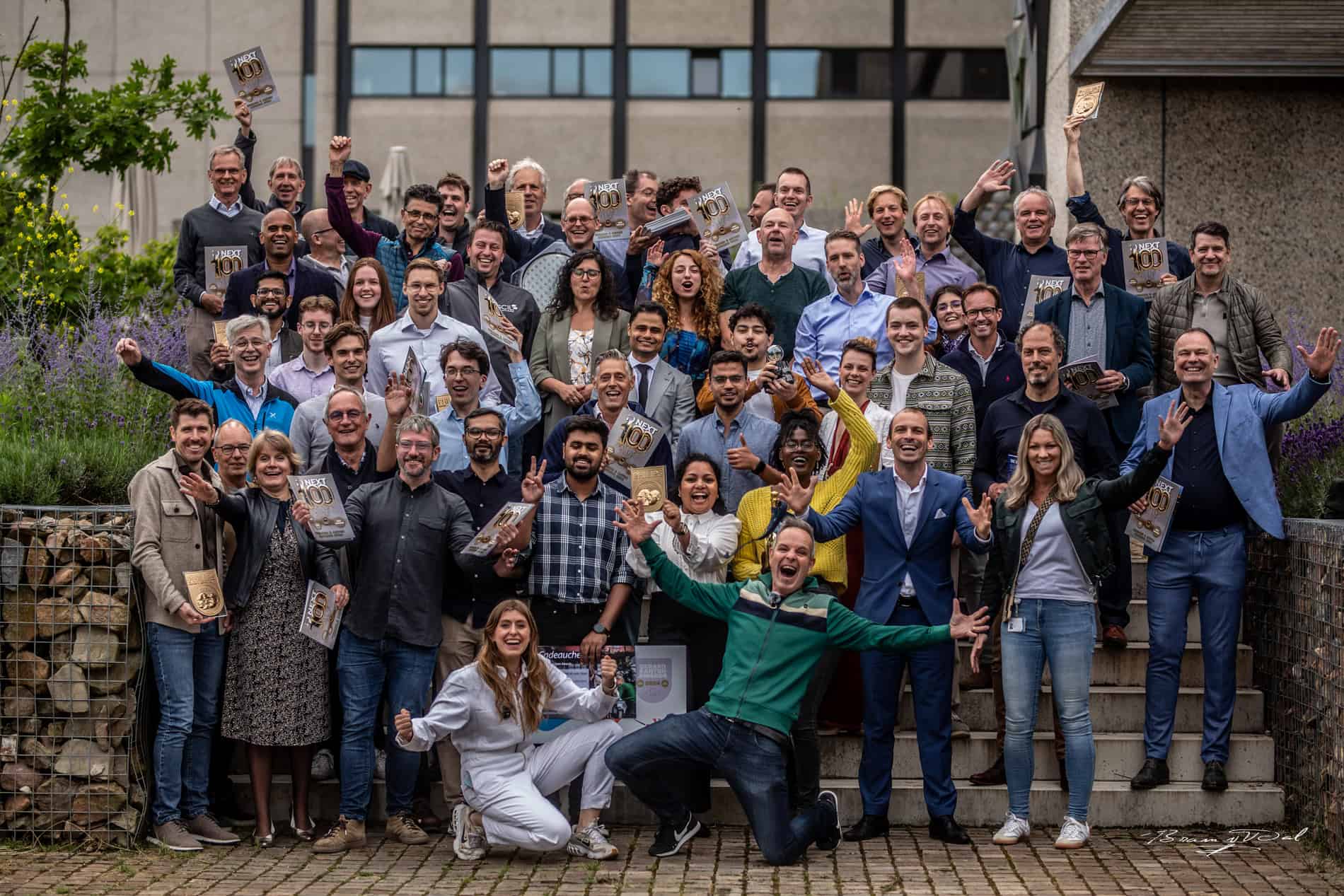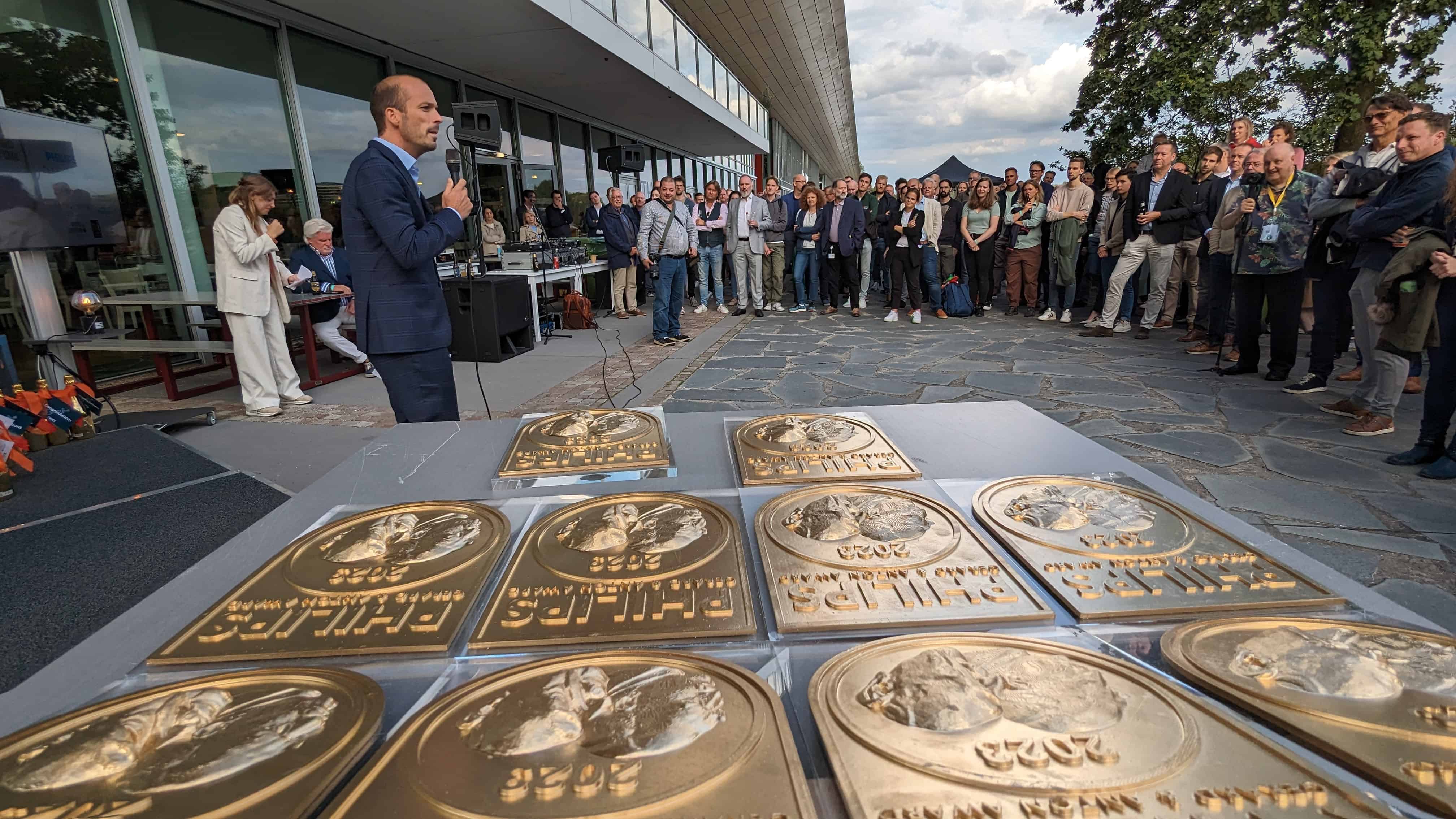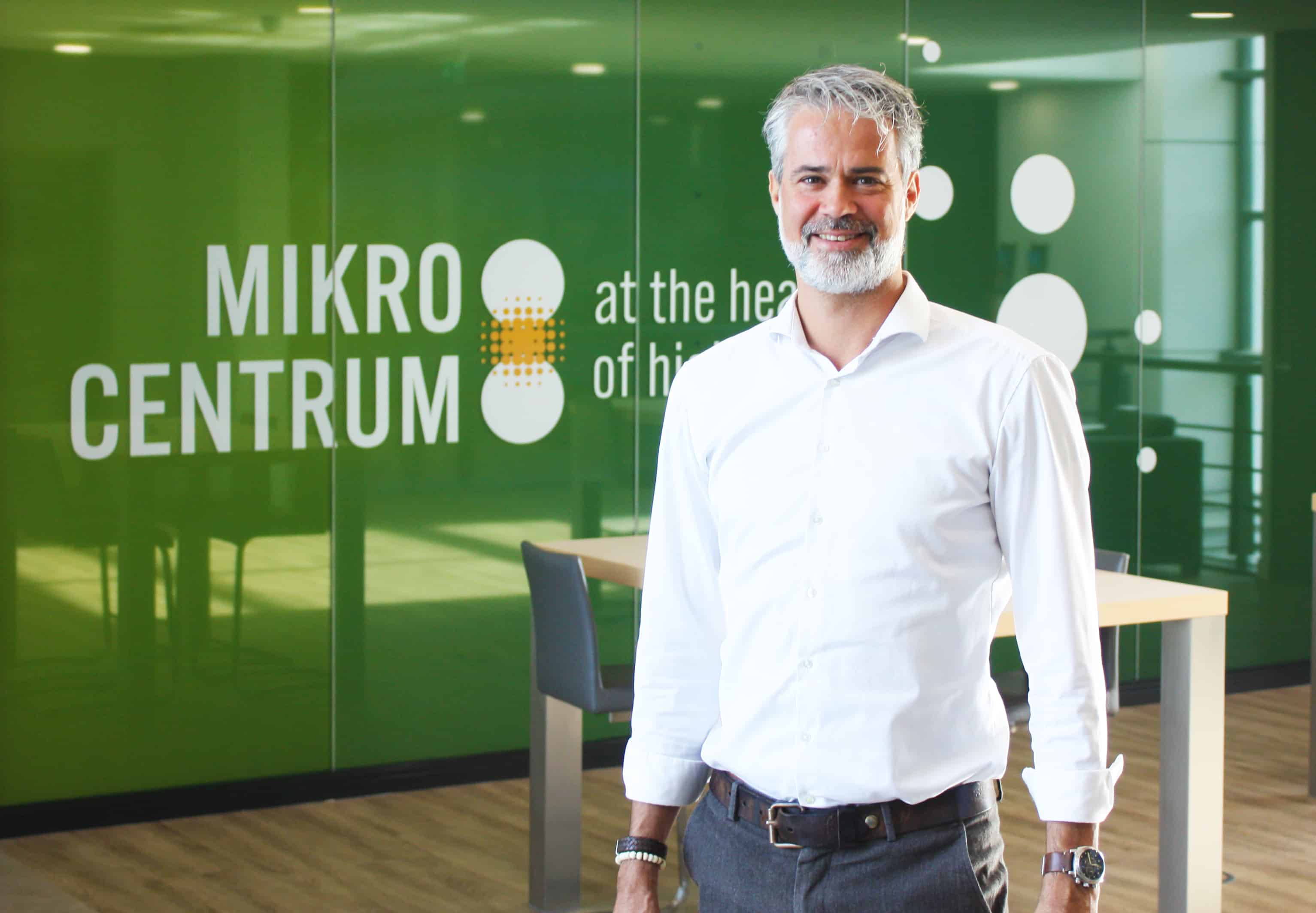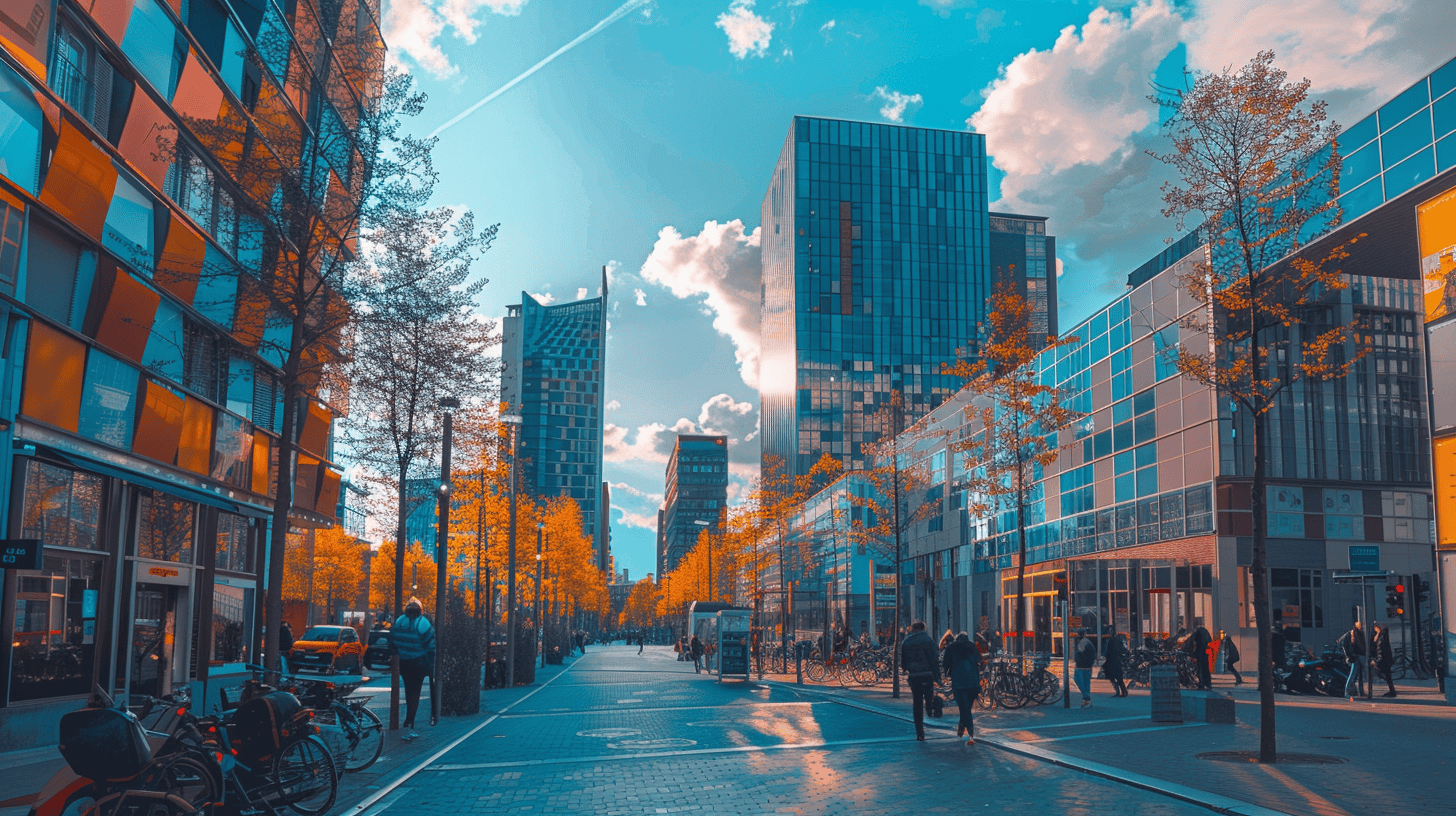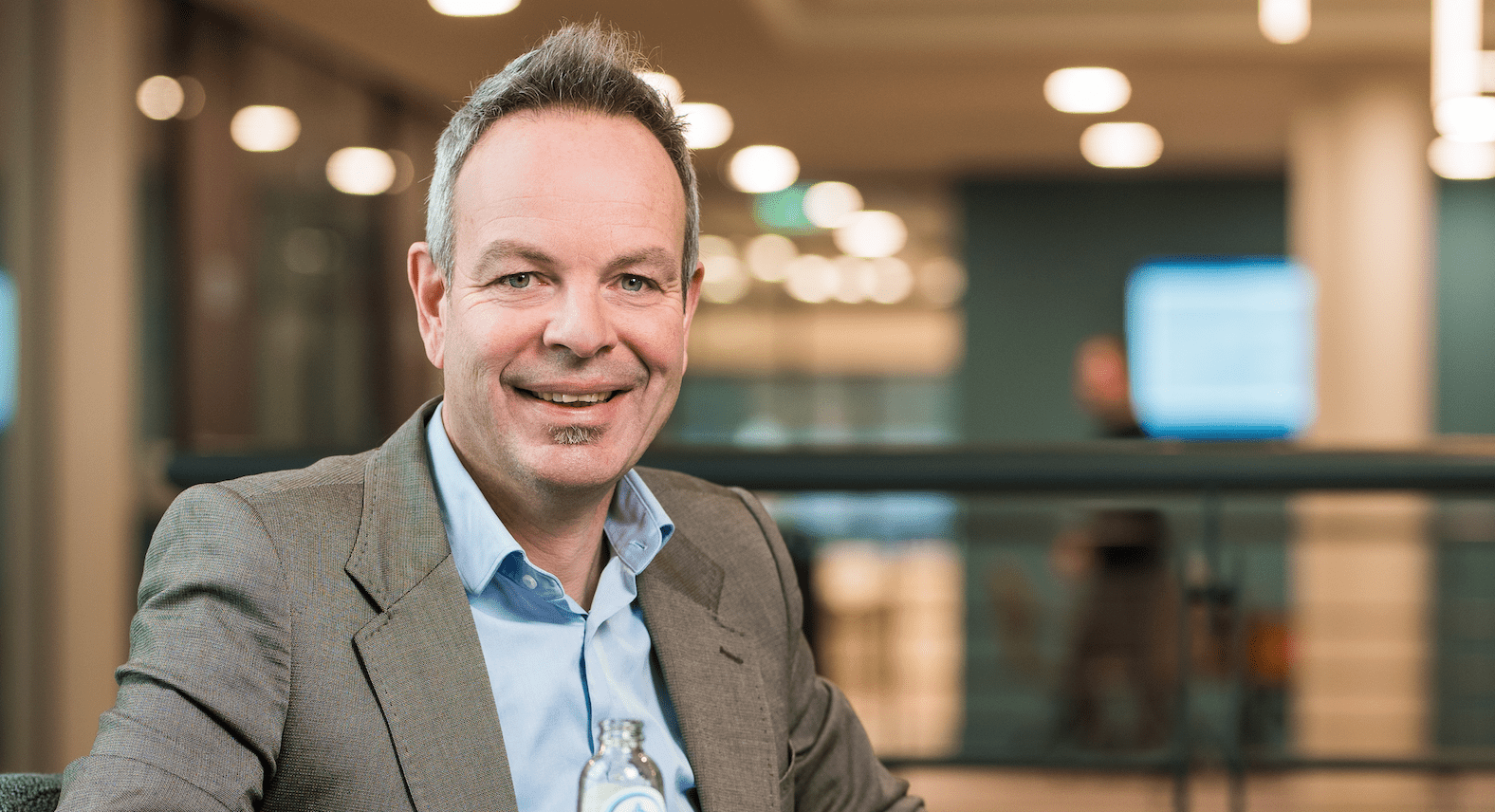
A faint heart for a pretentious meeting culture, an infectious belief in the power of the next generation (and the one after that), and a rock-solid faith in the achievements of innovative Eindhoven. These are some crucial ingredients in Bert-Jan Woertman’s character that led him to establish a startups-to-watch event for the Brainport region. But how did these elements come together in what we now call the Gerard & Anton Awards? And what was the role of Woertman himself – now primarily active as director of Mikrocentrum – within it?
Gerard & Anton Awards: 31 August
This year’s Gerard & Anton Awards celebration will be held on August 31 at High Tech Campus Eindhoven. All tickets have been reserved – email us if you want to be on the waiting list.
To start with that last question, the survey and interviews as part of the research on the success rate of start-ups from the Brainport region leave no doubt about Woertman’s weight, both inside and outside the awards themselves. He facilitates the much-needed contact between start-ups and the people and organizations they need to grow. Fellow entrepreneurs, influential officials, “system” players from Brainport, MRE, BOM or province, the incubators, and corporates: Woertman knows them all and always has a direct line available. As one interviewee put it, “We owe Bert-Jan ten times more for the success of our start-up than any other external factor.”
Gerard & Anton Awards
Woertman blushes at this, is even silent for a moment but then bounces right back: “There is only one factor responsible for the success of a start-up, and that is the start-up itself. It’s nice to hear that I was able to make a small contribution to that, but let’s not exaggerate. Moreover,” he adds, “fortunately, there is a larger support group. The most important of these is Guus Frericks. We all benefit from what he has done here. And personally, I learned a lot from him. Or take Hans Meeske, who, at his own risk, started developing High Tech PLaza on the High Tech Campus and with whom I now organize monthly Drinks, Pitches and Demos. Hilde de Vocht, Hans Krikhaar, also people without whom this region would not have become what it is today. The people behind Innovation Space, the DDW, Eindhoven Engine, there are so many more defining forces in this region!”
Start-ups to watch
It was spring 2014, and Bert-Jan Woertman was cycling back from a meeting on improving the Eindhoven start-up climate. As he wriggled through traffic on the Emmasingel, the comment of one of the participants about the international visibility of start-ups kept playing through his mind. Despite the good intentions of the meeting participants, no one had the answer. Woertman, who at the time as marketing manager of the High Tech Campus was already involved daily in “organizing coincidental meetings,” didn’t quite know what to make of it. “But coincidence or not, right when I got home, I saw a post about some event in New York called ‘start-ups to watch.’ I read about how they were hoisting promising start-ups onto a stage there, and I immediately thought: how complicated could it be to do the same here with us?”

The rest is history, as it is then called. With Hans Matheeuwsen of FRITS magazine, the first edition was put on the rise and the first ten winners emerged that same year. FRITS published the stories behind the start-ups, and the concept was born. What was not clear then – but is all the more so now – is that the successes from that first year (of the ten winners from 2014, only one has gone bankrupt to date, an unprecedentedly high success rate in startup land) would not be an exception. In the years that followed, the Eindhoven start-ups to watch kept defying the laws of modern investors. Where generally, at most two to three out of ten start-ups survive longer than a few years, in this group, the figure is more like eight out of ten.
Award ceremony
After that first year, only one aspect was added to the concept: a festive ceremony, complete with real awards. Otherwise, the idea is still as simple and effective as initially. One month before the award ceremony, the local community is invited to nominate candidates, and a – rather informal – jury process takes place, after which the invitations go out for the awards party. On that evening, the chosen ones take the stage one by one, after which everyone mingles with those involved in the local start-up ecosystem over beer and snacks.
FRITS gave way after its first year to the then newly founded E52, the forerunner of Innovation Origins. Because of its somewhat more logical content fit and its connection to the English-speaking community, our organization took over the organization in 2015. Since 2017, this has been done under the name “Gerard & Anton Awards”, by permission of the descendants of the very first Eindhoven start-up: Philips.
“Nothing much may have changed externally, but it’s still super important to keep doing it,” says Bert-Jan Woertman. “As young or small as they are, many start-ups are doing something special. But if the world doesn’t know them, they remain invisible. So you have to put them on a stage, give them recognition! Others then see that it can be done, and they realize, “I could be there too”. Especially for students, that is a huge incentive – and it shows when you see where many of our winners come from.”
By the way, Woertman still sees plenty of opportunities for improvement, as well as risks. “The opportunities for this region lie, I’ve been calling it out for years, in the connection between all the different scenes inside and outside Brainport. Make sure that all those different networks interlock better. Our awards play a role in this, as do the additional events such as the Peak Awards, the Expat Top10, Level Up, the demo days of HighTechXL, and Drinks Pitches and Demos, but more can be done. If you don’t organize that linkage, they will remain separate realities. Those coincidental or organized meetings between old and young, investor and start-up, researcher and entrepreneur. It starts with a cup of coffee or beer but always leads to more. Always.”
Dominant
Woertman also sees opportunities for the start-up climate with governments and corporates such as ASML and Philips. “Even more than investments, start-ups need clients, ‘launching customers.’ Now what if these big guys were to bring in regional start-ups as clients a little more often? That could really make a difference.” But there is something else about those big companies: their attractiveness as employers – especially in times of talent scarcity – creates a climate where founding a start-up becomes less natural. “Graduates of Fontys or TU Eindhoven don’t even have to apply for a job at ASML anymore, so to speak. Of course, it’s nice if you can start working for a great salary immediately after your studies, but isn’t it also a bit too easy?”
Even for the students who can resist that temptation, the young people who already know how to move into a startup, there is still a world to improve. “Look at what a start-up has to do to raise a little money. Unbelievable what they all have to go through, hoping that one of those parties will deliver for once. And all the energy that goes into that, they can’t spend on building their business – thus making it a risk to their viability. That can be done better.”
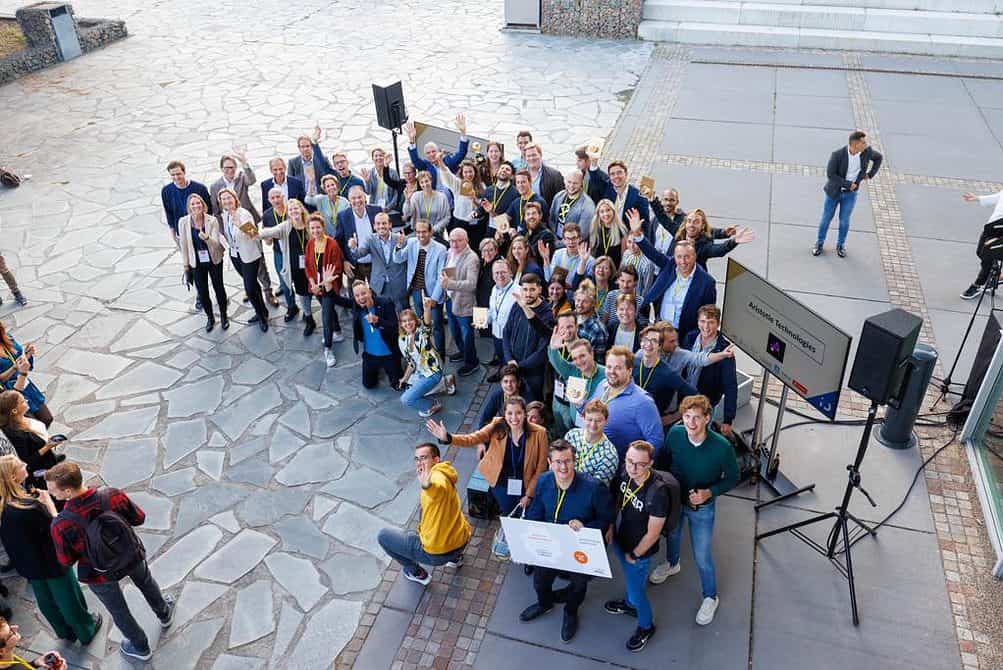
Selection from knowledge
But how should it be done? Could the disproportionate success of the Gerard & Anton start-ups hold the key to an improved evaluation system by potential lenders? After all, if the jury of the awards is able to select the most promising start-ups time and again from the large (and growing) pool, there must be a valuable structure behind it. But where does it lie? How can a relatively informal judging process lead to such a higher success rate than the standard, much more complex, and documented process the existing systems use? Woertman does have an idea: “We can do that because we have a jury with solid prior knowledge. We know all these start-ups through our network. We meet them at the bar, at the coffee machine, or at events. And so we judge them not from paper or a pitch, but simply from everyday social interaction. Combine that with all the years of experience and cooperation in High Tech, and you quickly have a good picture of an individual start-up and the team around it.”
People’s share
This brings Woertman to another idea of his that still awaits implementation: the people’s share. “The idea has been haunting my mind for years, and maybe in times of extreme inflation it’s not the best time, but still: what if you set up a fund that everyone could participate in, from coffee lady at the municipality to ASML employee or student. All those small amounts together not only ensure that you can boost local start-ups, but also that everyone can really embrace them, because everyone has a stake in them. Together you make something essential for our future possible and can be an enormous boost for the Brainport feeling. Together you contribute, together you decide on the destination of the money. We can do that very well thanks to that solid prescience I just mentioned, just look at what we show in the Gerard & Anton Awards. And it doesn’t stop after the allocation of the money: together, you are permanently involved in the ups and downs of the supported projects.”
Whether that people’s share is viable or not, as long as Bert-Jan Woertman is around, ten promising Eindhoven start-ups will be hoisted onto a stage at least once a year. They have a beer together, link to the network, and a few years later, celebrate their growing success again. “That’s incredibly cool, isn’t it?”




